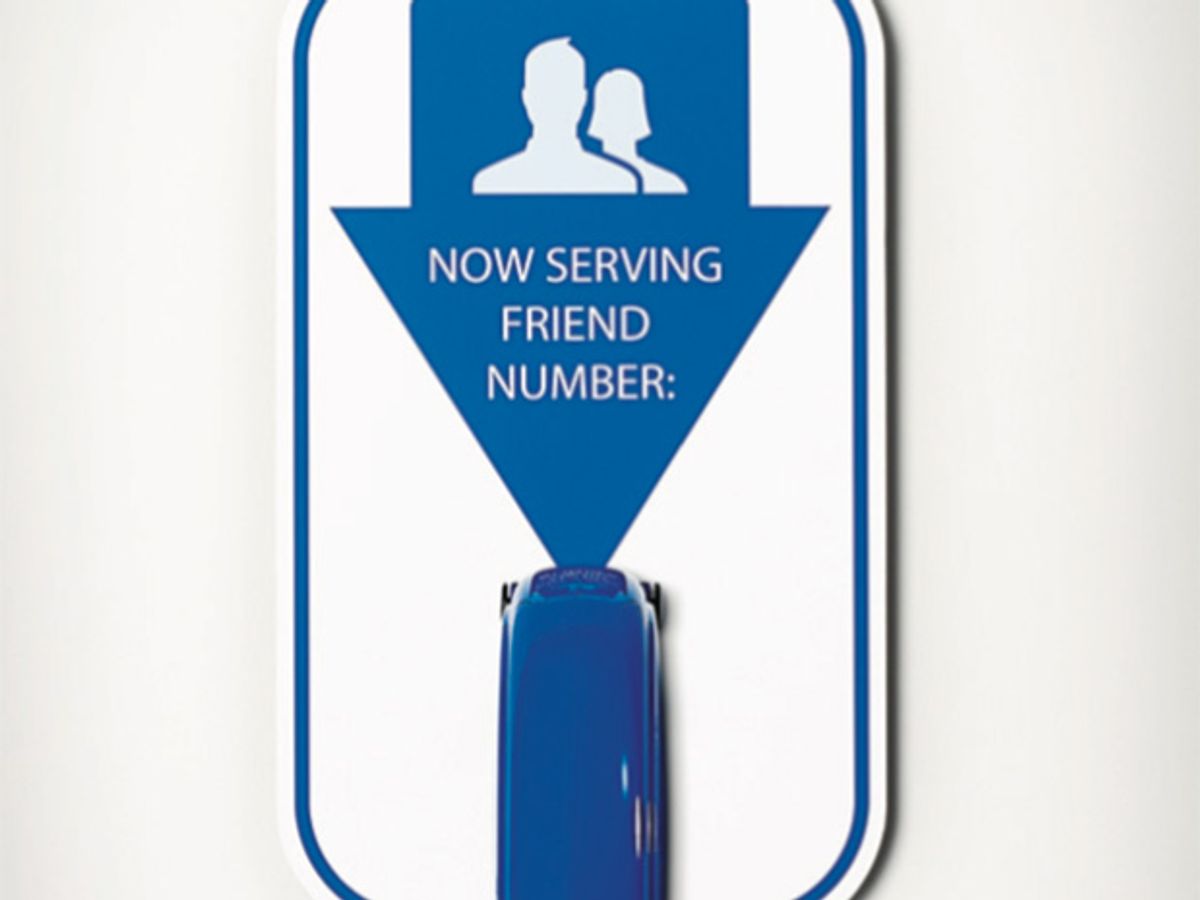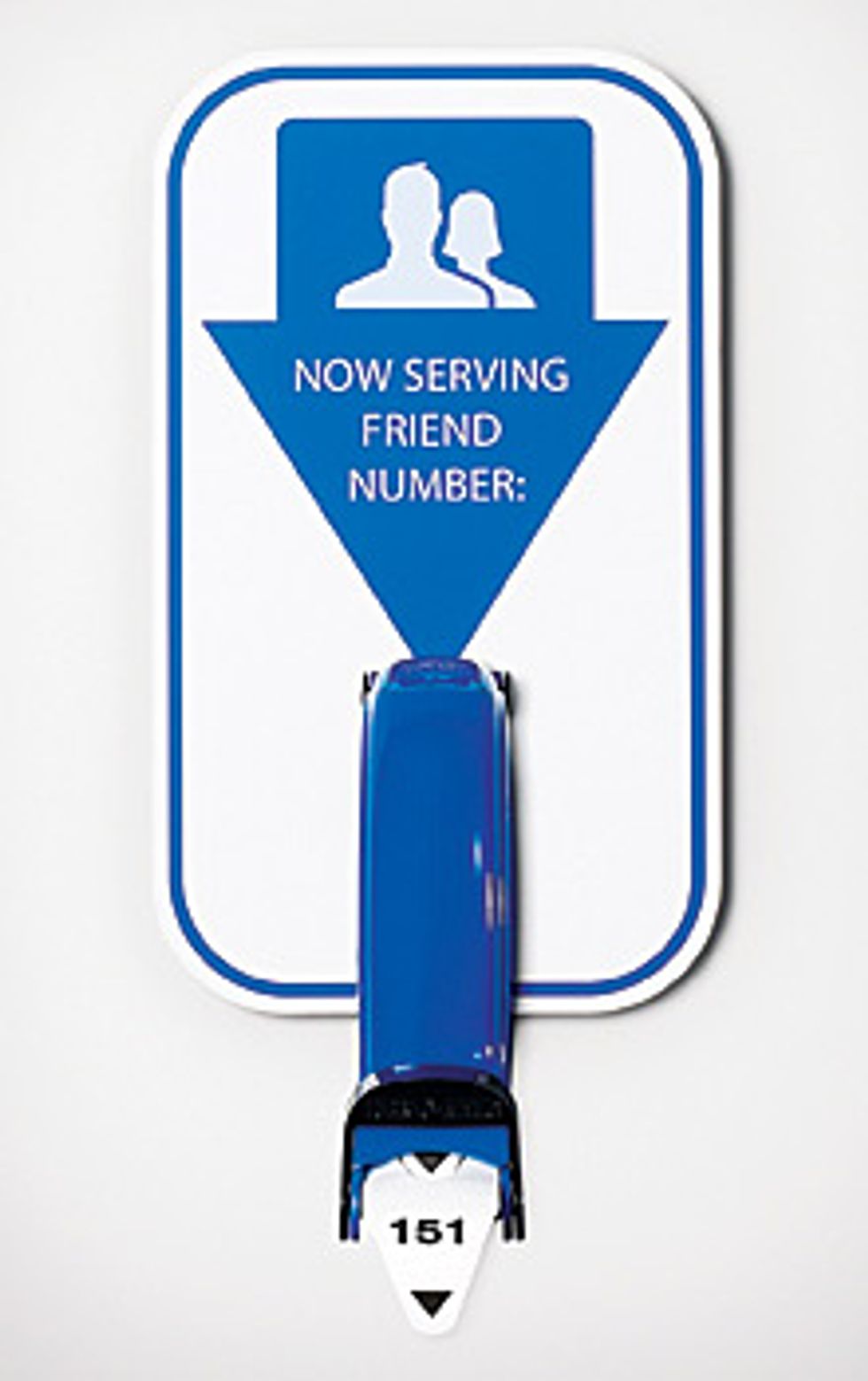How Many “Friends” Can You Really Have?
Can social networks expand the evolutionary limit on how many people anyone can truly be close to?

This is part of IEEE Spectrum’s special report on the battle for the future of the social Web.
Who would have supposed seven years ago that the newly launched piece of software called Facebook would so quickly become a routine part of everyday life? It was, after all, just one more digital trick purporting to spring us from the dusty confines of our small-town lives and into the sunny uplands of a global village, where we could make new friends all around the world.
Some might call this the fulfillment of the tech folks' brash promises that such software would help us stay close to an ever-expanding universe of pals. There are the triumphal claims of those who say they have 1000 or even 5000 friends on their Facebook pages, who claim comrades in far-off corners of the world they have never visited. But is this really true? How many real friends do people have on Facebook?
Facebook itself did a survey of its accounts about a year ago and found that the average number of friends was between 120 and 130. The distribution is, of course, skewed, with a long tail to the right. Some people really do number their friends in the thousands, but they are in fact few and far between. And many of these cases are actually professional accounts held by writers, journalists, and musicians who use Facebook as a fan base.
The odd reality is that we are actually not capable of managing more friendships than you typically see on Facebook now—or more than people have traditionally maintained. Across the primate order as a whole, there is a general relationship between the size of the brain's neocortex and the size of the average social group, and this relationship predicts a group size for humans of 150. This value is now known as Dunbar's Number, because I was the first to point it out, in 1992. The number pops up surprisingly often in human organizational life, not least in the military, where it defines the key unit on which everything else is structured, namely the company. It is also the average size of a personal social network—the number of people with whom you have some kind of reciprocated relationship.
Of course, you know many more people—you can put names to the faces of around 1500 individuals. But you have a very different kind of relationship with those who come between the 150 and the 1500: You know who these people are, but they don't necessarily know who you are. The list includes folks like President Obama, the anchor of your favorite TV news channel, the woman you see at the bus stop every morning. You can add them to your Facebook page, but they can't really be counted as meaningful friends.
Of course, sublevels exist even within that select circle. At the top of your social pyramid are the five people closest to you, most of them probably relatives. They are nestled inside the top 15, with whom you generally have weekly interchanges. Then come the top 50, with whom you keep up every month or so. Finally, there are all the others with whom you correspond in any meaningful sense. All the relationships require tending, although relatives retain their place in the hierarchy more tenaciously than nonrelatives do.
Data that my colleagues at the University of Oxford and I have gathered suggest that if you start to invest less time in a friendship, the emotional quality of the relationship will decay within at most six months. The relationship will gradually bump its way down through the layers of friendship until eventually it slips over the weir at 150 and that person becomes “one of those people I once knew.”
It is here, perhaps, that Facebook does demonstrate its value.
Until about a century ago, social movement was relatively modest, and most people probably grew up within a day's journey of where they had been born. Communities were small (in fact, typically about 150 to 200 people), and most folks knew everyone. That arrangement created a complex web of interwoven relationships, many of which were familial. Since then, society has undergone a dramatic change. It has become commonplace for people to move many times during their working lives—first to college, then to their first jobs, followed by a series of moves as they are transferred to new offices by their companies or move to new jobs elsewhere. The result is that our networks of 150 have become fragmented into small subsets of friends picked up along the way. Our college friends probably do not know our family, and they certainly won't know the friends we acquired when we moved to another city for a job.
Not only have our networks fragmented, they have also dispersed, often across an entire country or even to every continent. In the past, most of those ties would have quietly withered away with time, much as our immigrant ancestors' ties to their homelands quietly died after they left to start life in a new country.
I suspect that Facebook's one great contribution has been to slow down that rate of relationship decay by allowing us to keep in touch with friends over long distances. How long it will prevent relationships from fading altogether remains to be seen—social networking sites haven't been around long enough for us to tell yet. My guess, however, is that they will slow the rate of decay only temporarily and won't prevent relationships from dying eventually. What makes relationships really work, it seems, is “doing stuff” together. Catching up over the phone helps to keep the acquaintance ticking, but if at some point we don't get together—and sooner rather than later—then the relationship will fade, Facebook or no Facebook.
One might think that by cutting through some of the time and inconvenience involved in keeping up with friends, Facebook could allow you to widen your social circle. Yet the answer seems to be a resounding negative, as Facebook's own survey showed. Our Facebook friends are, by and large, the same folks as our everyday friends. If you have more than 150, it is because you are including people who have no meaningful relationship with you. They are no more than voyeurs in your social life. In fact, studies of traffic on Facebook suggest that when we write on our own or someone else's wall, we think we are engaged in a conventional conversation with just a few other people.
An explanation for this phenomenon may come from work that my colleagues and I have done on how people evaluate interactions with close friends over different media. We compared face-to-face conversations with ones involving the same individuals over Skype, phone, e-mail, text, and social networks. Face-to-face conversations beat Skype, which in turn elicited radically more satisfaction than did those involving the other technologies. Something about the sense of being in the same place seems to make an immense difference that neither old-fashioned phones nor modern Facebooking can yet manage. The immediacy of the interaction is part of it, but so too is seeing the other person's responses to what we say. Laughter turned out to be the key. Even e-mails that evinced laughter (often just signaled by an “LOL”) were viewed more positively than those that didn't.
All these results suggest that the main challenge for social networking will be to make exchanges more like real conversations. In the end, just posting photos of our vacations isn't enough: We need to be able to have something closer to the back and forth of a real conversation about the photos [see previous article, "This is Your Mind Online"]. Ultimately, I believe, the real challenge will be to solve the problem of virtual touch. In our everyday relationships, every touch is worth a thousand words.
This is part of IEEE Spectrum’s special report on the battle for the future of the social Web.
About the Author
Robin Dunbar, a professor of anthropology at the University of Oxford, is the fourth person to have his name connected with a law at the heart of an IEEE Spectrum article (along with Moore, Metcalfe, and Edholm).
